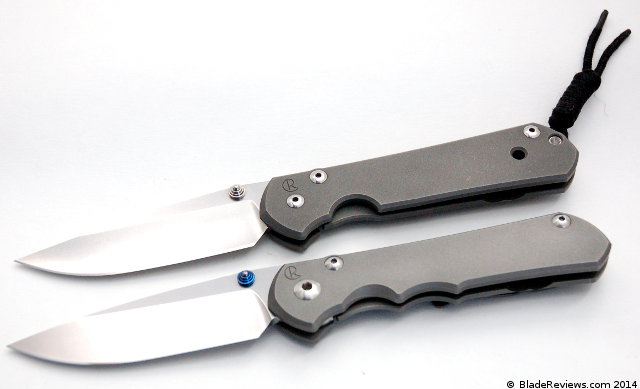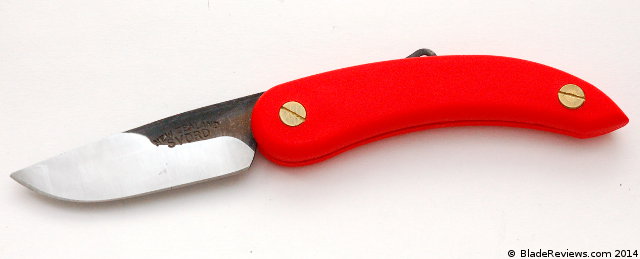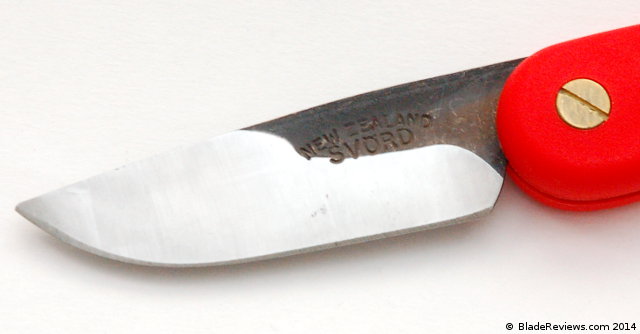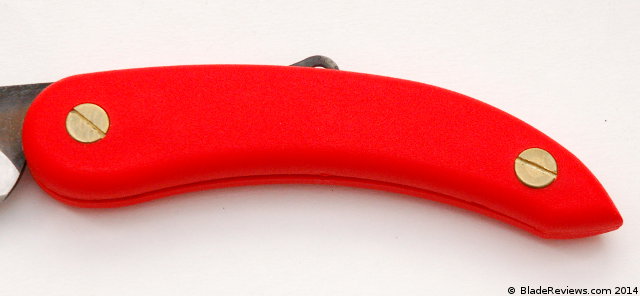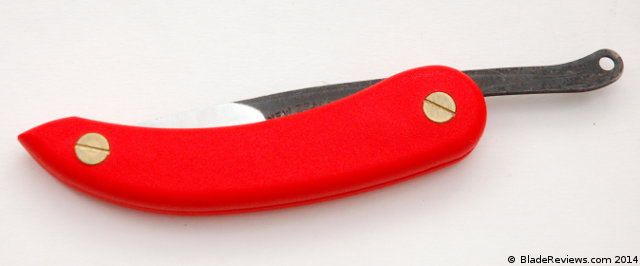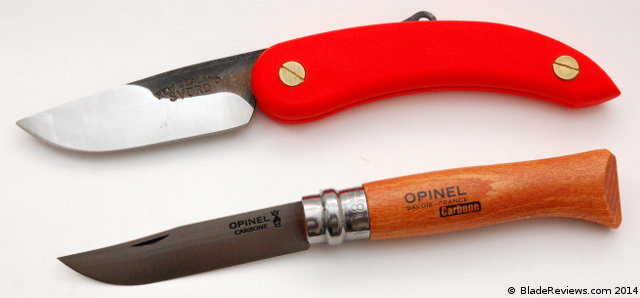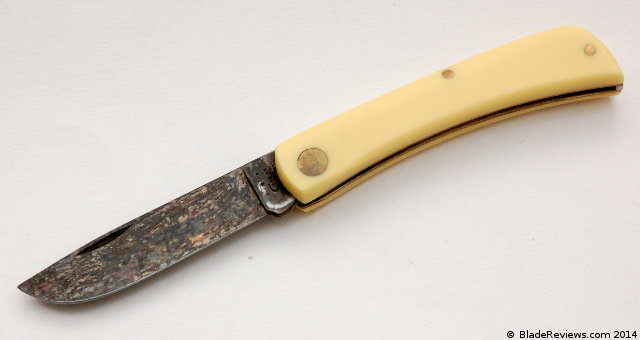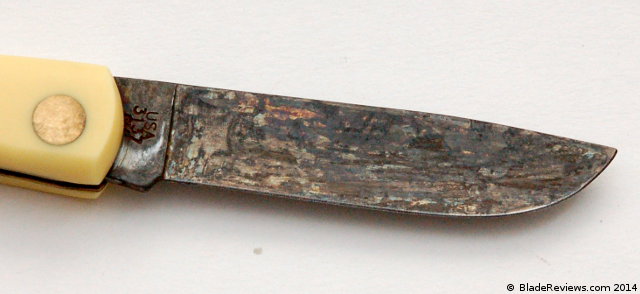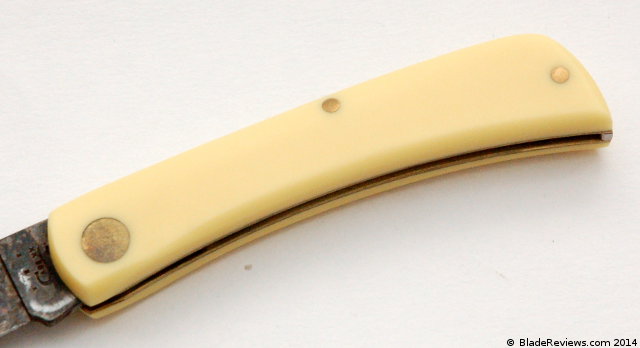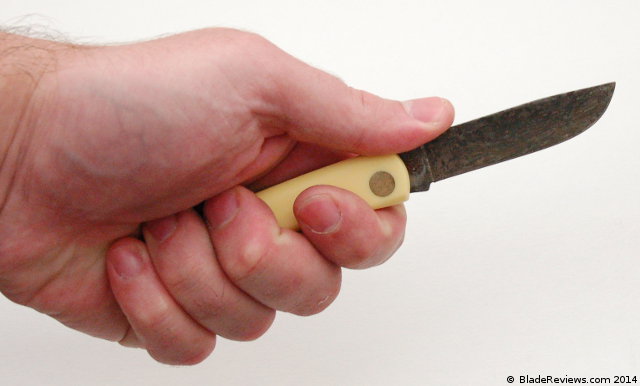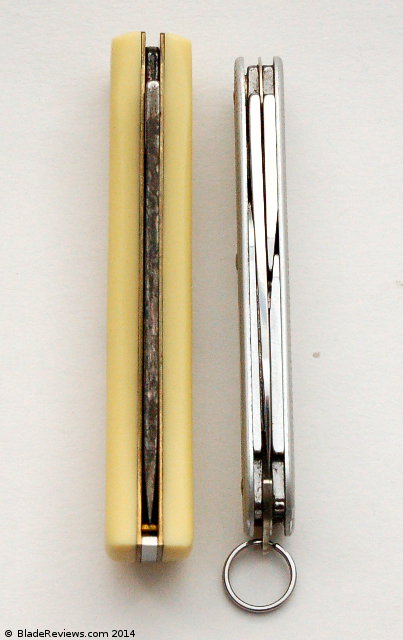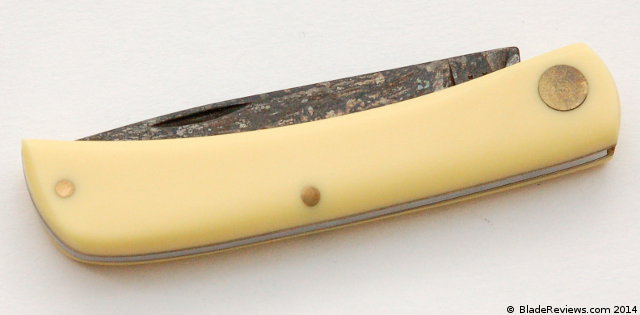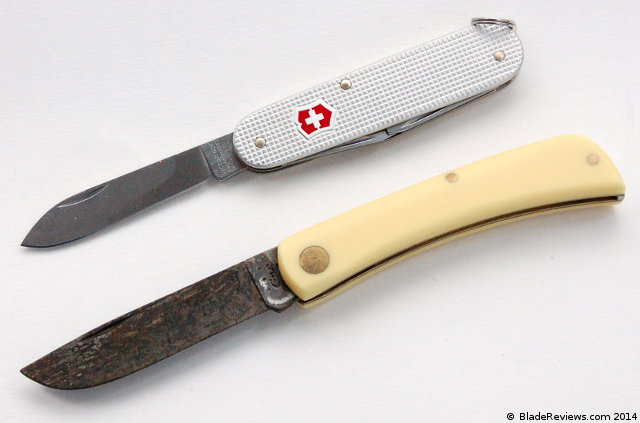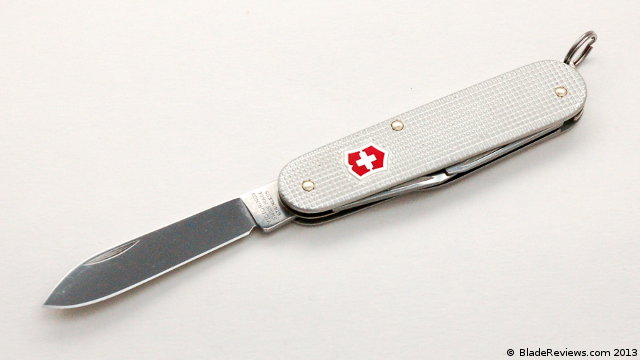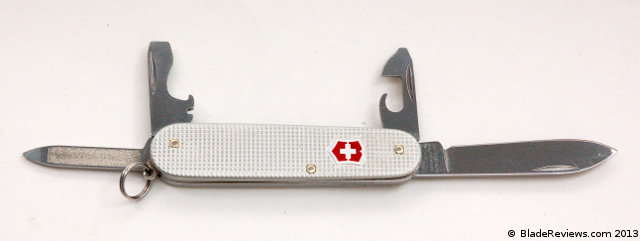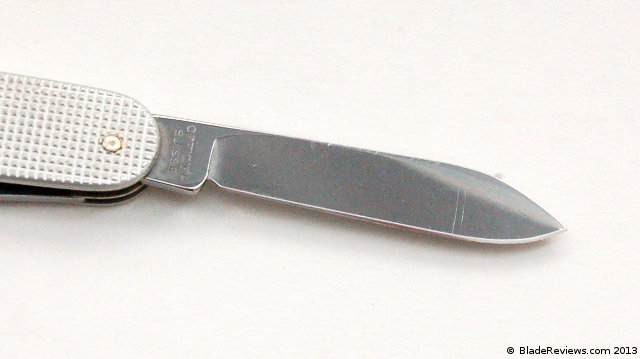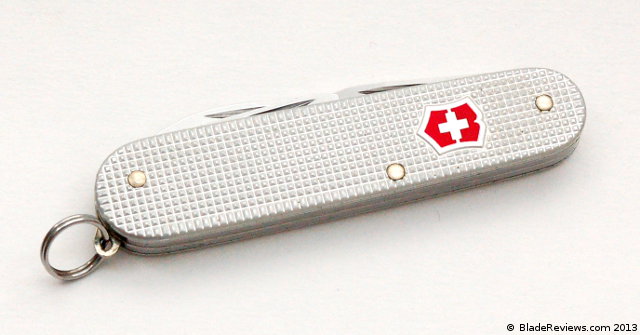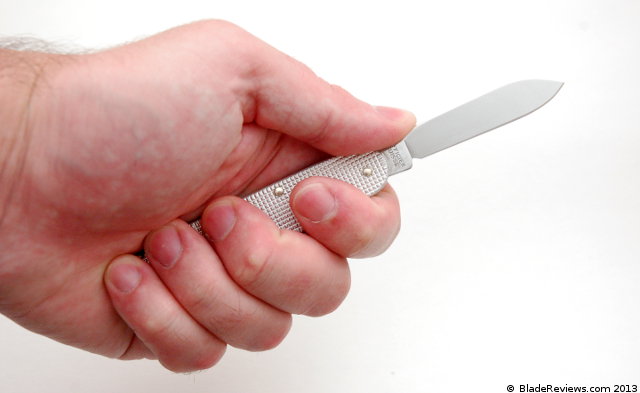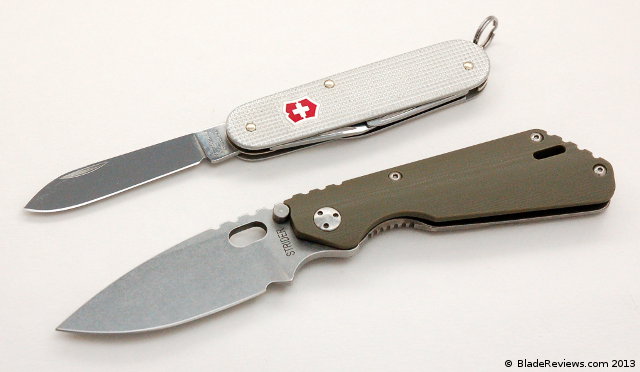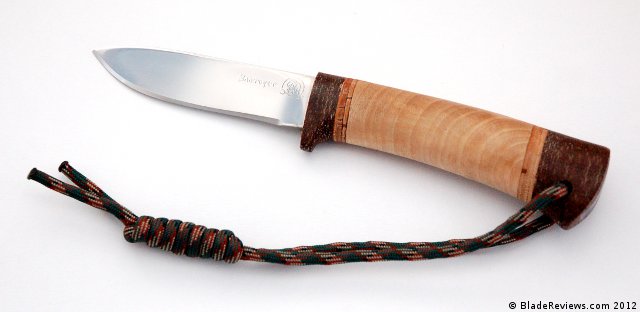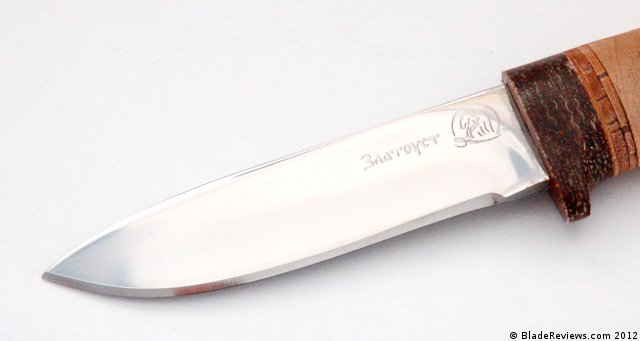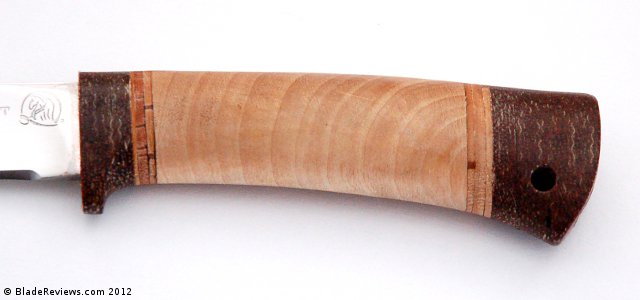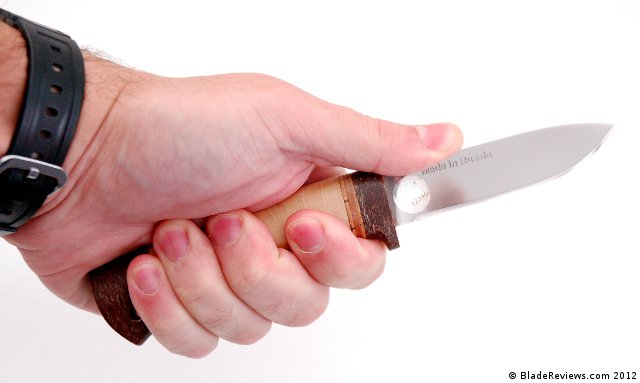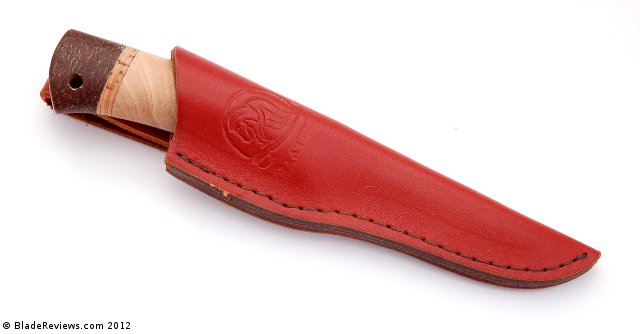How do you improve on perfection? That may have been a question asked by the engineers at Chris Reeve when they approached the Sebenza 25. I wasn’t in the room, so I really have no idea. The Sebenza has received incremental improvements over the years, but for it’s 25th anniversary CRK really wanted to up the ante, or at least do something different from the tried and true Sebenza 21. The Sebenza 25 is that knife.
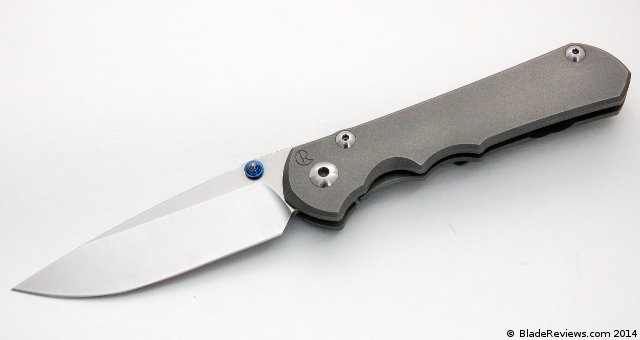
Buy the CRK Sebenza 25 at BladeHQ
The 25 is beefier and has more attitude than the 21, but there is still no mistaking it for a Sebenza. Is the 25 a worthy buy? Should you get it instead of a Sebenza 21? How does it compare with other knives in CRKs lineup? Having owned a Unumzaan, and presently owning a large Sebenza 21, I decided to pick up a Sebenza 25, give it a whirl, and attempt to answer some of these questions.
General Dimensions and Blade Details
The Sebenza 25 has an overall length of 8.375″, a 3.625″ blade, and it weighs 5.2 ounces. It’s similar in size to a large 21, but it’s definitely a more heavily built knife and weighs a full half ounce more. Offhand I would consider it as a hybrid between the 21 and the Umnumzaan. Unlike the 21, CRK does not currently offer a small version of the 25. Will we eventually see a mini 25? Only time will tell. I know plenty of people like to EDC the large 21, so I don’t see why you couldn’t EDC a 25. Personally I prefer a small Sebenza or a Mnandi for EDC, but I did make a point to carry the 25 around a bit to understand how it performs as a daily carry.
The blade of the 25 is a classic CRK drop point, with a few subtle (or not so subtle) changes over the 21. First of all the blade stock is visibly thicker at .14″ (which is approximately 3.5mm – the blade on the Sebenza 21 is about 3.1mm thick). Chris Reeve also gave the knife what they are calling a “large hollow grind” which is billed as a compromise between the thinness and slicing performance of a hollow grind and the toughness of a full flat grind.
I recently expanded my office at work and bought some new office equipment including a monitor, printer, computer, etc. As a result I had a lot of extra cardboard on my hands and decided to give the ole 25 a whirl at breaking down all of the boxes. I wasn’t blown away by the performance of the 25 on cardboard, but I wasn’t disappointed either. My large 21 slices a little better, but then again, so does my Benchmade Volli with it’s thin flat ground blade. It’s still miles ahead of the Strider SnG. The 25 is more heavily built than the 21, and it comes with a thicker grind. It’s not necessarily a bad thing, just different. Speaking of different, there is also a little depression in the blade after the jimping. I have no idea what it is for, so I’ll wait for someone to let me know in the comments section.
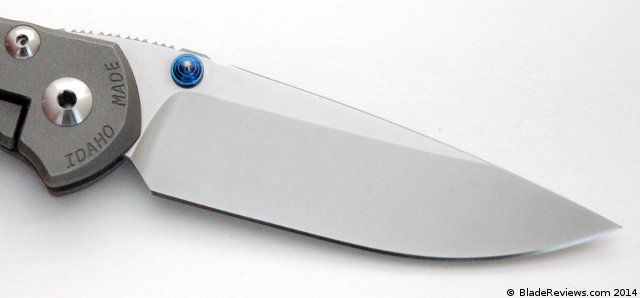
Steel on the 25 is S35VN, which is what CRK is using on pretty much everything these days if my understanding is correct. The blade on the 25 is heat treated to 58-59 HRc, and at that hardness it seems like a good combination of edge retention and sharpenability. Some might find it a little too soft, but I like a knife that easily takes a good edge, and the 25 has been very easy to maintain with my strop. I will say after testing the blade out thoroughly on cardboard the edge didn’t feel that sharp, but it still sliced paper with no problem. A few swipes on the strop brought it all the way back. If edge retention is super important for you, then you are probably better off finding something in M390 or S90V (harder more exotic steels), but if you are OK with the idea of regularly maintaining the edge of your knife then I don’t see a big problem with S35VN and this milder heat treat that CRK favors.
Handle, Ergonomics, and Pocket Clip
The handle of the 25 is the typical full titanium goodness you would expect from Chris Reeve. Construction is simple and elegant, with a pivot, stop pin, and single standoff. Some may lament the lack of a lanyard hole, but it looks like CRK designed it so you can loop some cord around the standoff. Personally, I don’t miss the lanyard doohickey on my large 21 at all. Construction is top notch, as expected. This is a Sebenza after all. I like the choice of beefier hardware. The pivot has seen a serious upgrade and the domed body screws are beefed up as well. The disadvantage to this setup is that 2 allen keys are required (and supplied), rather than just the one required to take down a standard Sebenza.
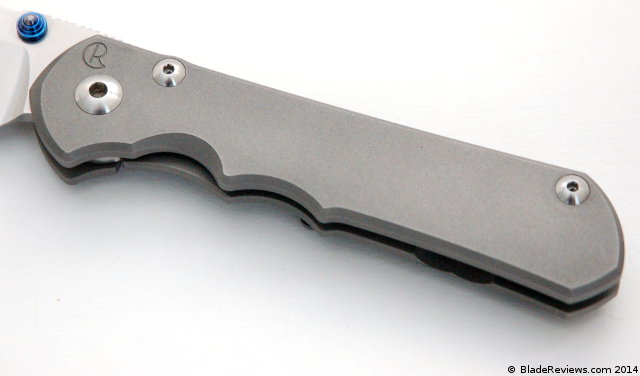
Perhaps the biggest change in the Sebenza 25 is the inclusion of double finger choils. It certainly adds a visual element to the knife not previously evident on CRK models. In practice I think the choils work well and capture the index and middle finger nicely. My hand feels very at home with the standard grip. A revision I am less enthused about is the razor wire inspired jimping installed on the back of the blade. I would say that the jimping on my large 21 is a damn near perfect blend of traction and comfort. Why Chris Reeve felt the need to mess with that winning formula is a mystery to me, but it certainly looks more aggressive. The jimping is fairly abrasive, but I only really noticed it on hard cuts, like cutting rope. Still I think they could have toned it down a bit. All said the 25 is a reasonably comfortable knife. I’m not sure I would call it an improvement over the 21, but it’s definitely different.
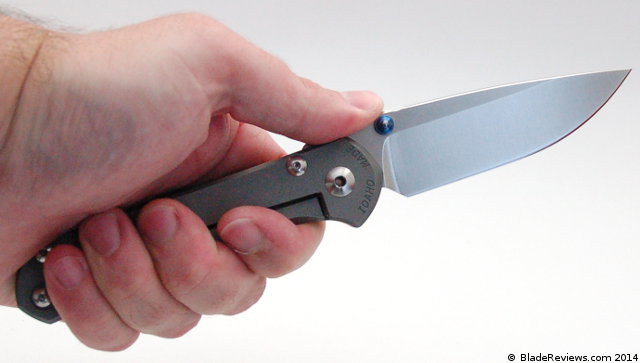
The pocket clip for the 25 is the same legendary double dip clip found on the 21. I’m glad they didn’t fool around with this. It works well and is one of my favorite clip designs. In pocket the 25 carries pretty good. It is a big knife, and is full titanium, but with that in mind I’d say it still carries well for its size.
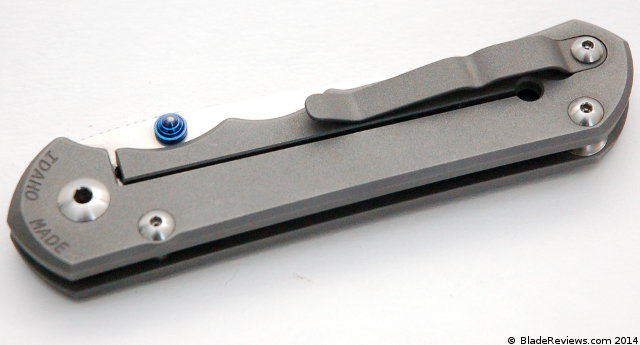
Deployment and Lockup
The term “Sebenza smooth” is something of a gold standard in knife collector circles when considering the action of a pocket knife. So it’s interesting to see that CRK made some tweaks to ensure the deployment of the 25 is even smoother than its predecessors. In addition to a much larger pivot, the knife features extra large perforated phosphor bronze washers. According to the Chris Reeve website these were installed to carry more grease and make the action smoother. In practice I think it has worked. My 25 is noticeably smoother than my 21. Granted I am testing a pretty small sample size here, and some may disagree because the 25 doesn’t include the 21’s famous bushing pivot system.
The knife flicks open easily via the ambidextrous titanium thumb studs. Speaking of thumb studs, or thumb “lugs” as CRK calls them, I think it’s about damn time that dual thumb studs came standard equipment on a Sebenza. I also can’t help but wonder if CRK has plans to introduce a bearing equipped knife in the future. Bearings are by no means a necessity, but since that is where a lot of the industry is going I would be curious to see them offer a knife with bearings.
For lock up Chris Reeve went with a ceramic ball detent. Just like on the Umnumzaan, it serves double duty as both an interface between lock and tang, as well as detent to hold the blade in place. It works well and I have no complaints. The blade locks open with a satisfying thunk and lockup is steady at right around 50%. No blade play at all and the blade is perfectly centered.
CRK Sebenza 25 Review – Final Thoughts
For whatever reason I always find myself under some pressure to come up with a poignant parting thought on Chris Reeve products. Perhaps it’s to justify the price in my own mind, or justify the level of excitement and expectation that has been built up around these knives, or attempt to get ahead of the inevitable discussion about Chris Reeve knives and “value”. I’m going to avoid that this time around, and instead focus on my honest take on the knife.
I think the 25 is a solid and well made product. I consider it a hybrid between the Umnumzaan and 21. That’s not necessarily a bad thing, but if you already have a 21 or an Umnumzaan I don’t really see the “need” for this knife. Then again, I don’t really see the “need” for a $450 pocket knife in general, yet I have owned dozens, so that is beside the point. Like other high end knives, people will buy this because they want it. I’m here to tell you that if you want it, it’s a nice knife. But I’ll also play the role of devil’s advocate:
The 25 is thoughtfully designed and well made, but isn’t a huge enough leap from Chris Reeve’s other offerings for me to truly get excited over it. Maybe if they installed bearings, milled the handle from a single piece of titanium, or did a flipper or something like that it might move the Richter scale a bit further. Don’t get me wrong, it’s a perfectly fine knife, and if this is your first CRK I think you will like it, but when you compare it with the rest of the CRK product line I can’t help but feel like it’s more of what we have already seen. I’m glad I got to check one out, and recommend you to do the same if the 25 interests you, but I don’t feel compelled to hang onto both the 25 and my large 21 or to tell you that this is the most amazing thing since the titanium frame lock.
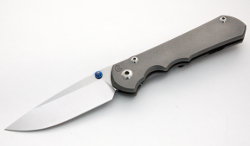
Chris Reeve Sebenza – From $445.00
From: BladeHQ
I recommend purchasing the Sebenza 25 at BladeHQ or KnifeArt. Please consider that purchasing anything through any of the links on this website helps support BladeReviews.com, and keeps the site going. As always, any and all support is greatly appreciated. Thank you very much.
